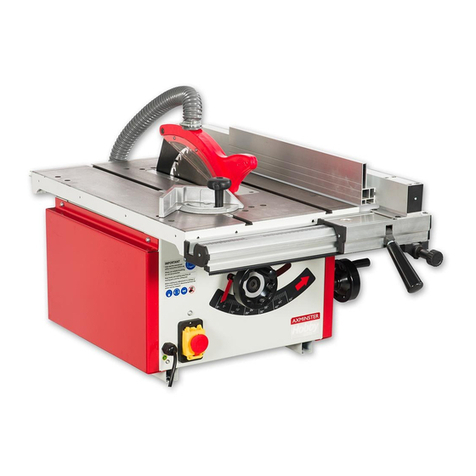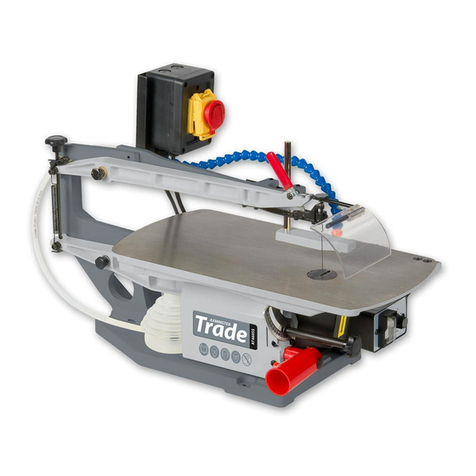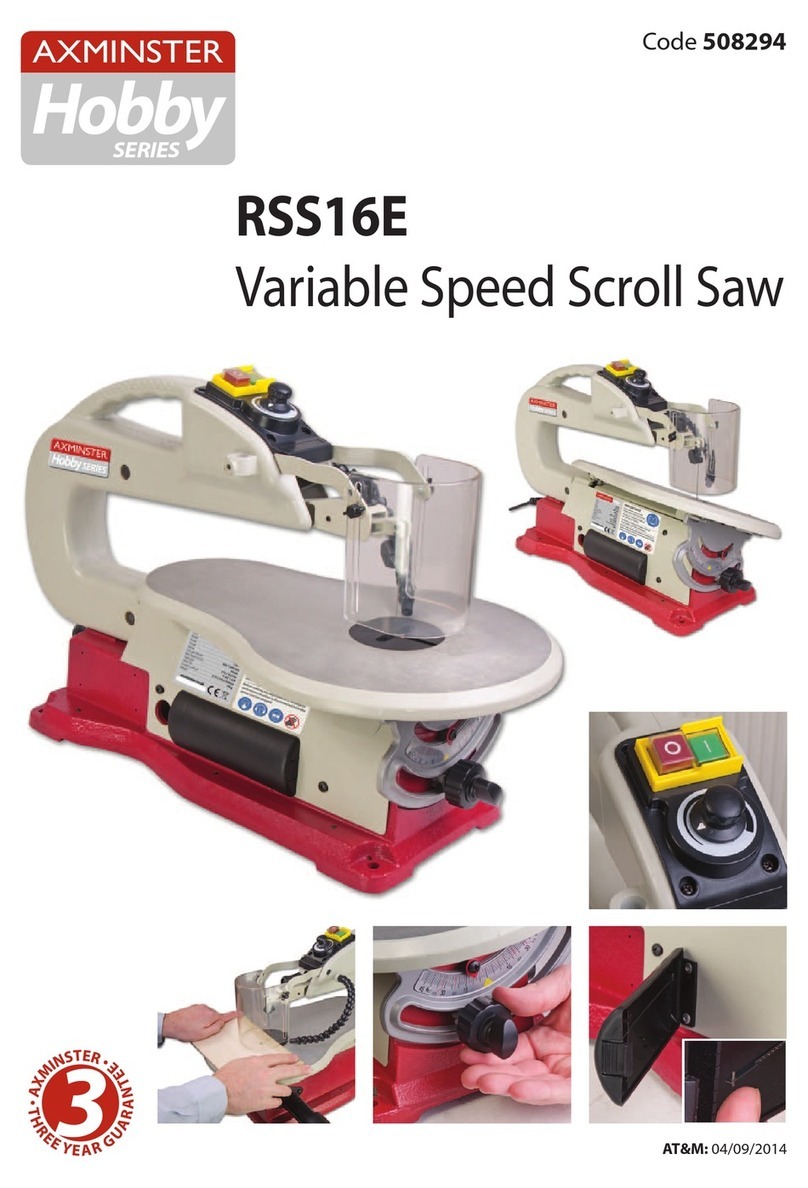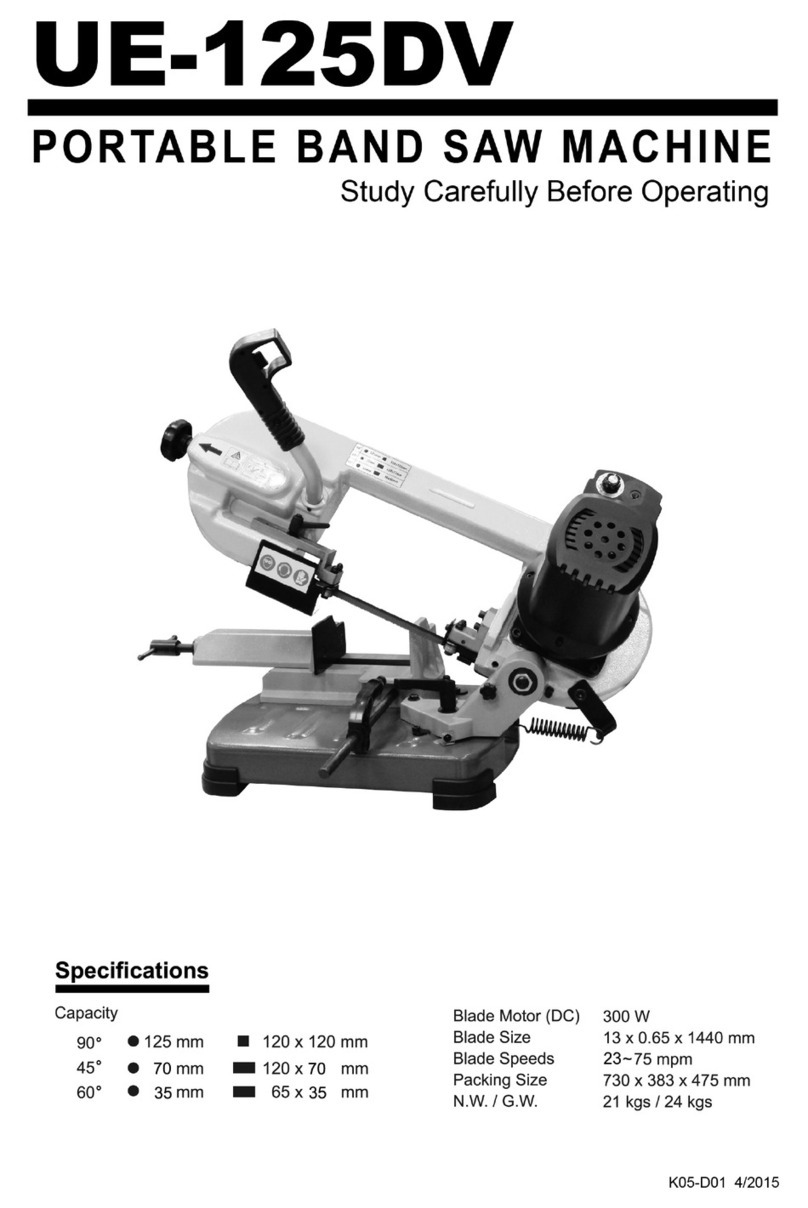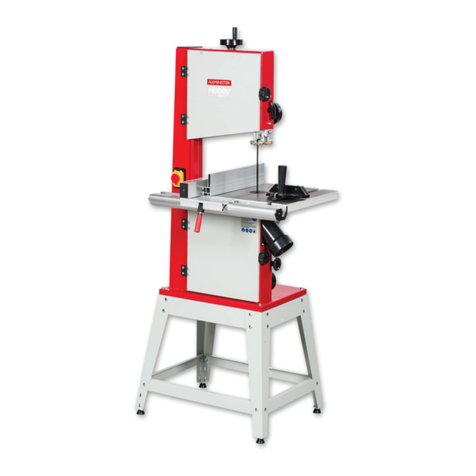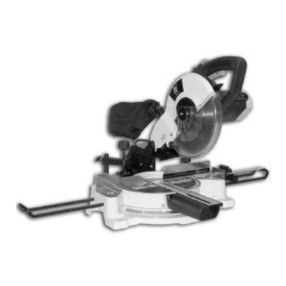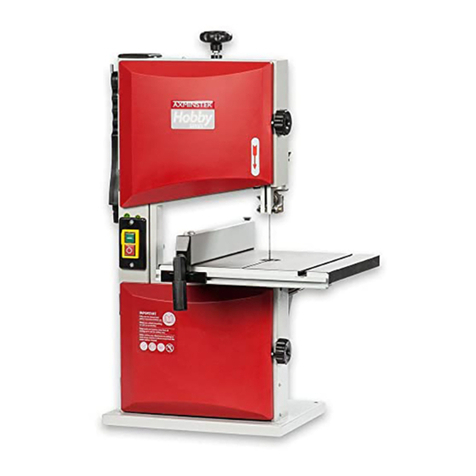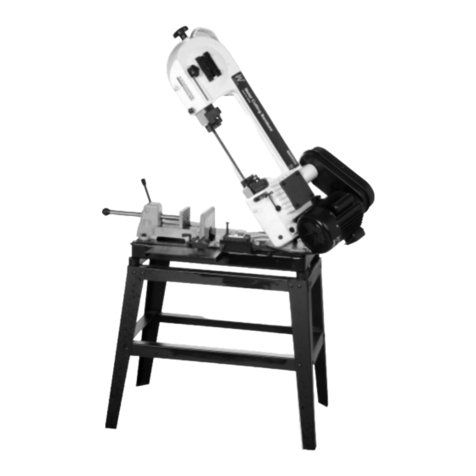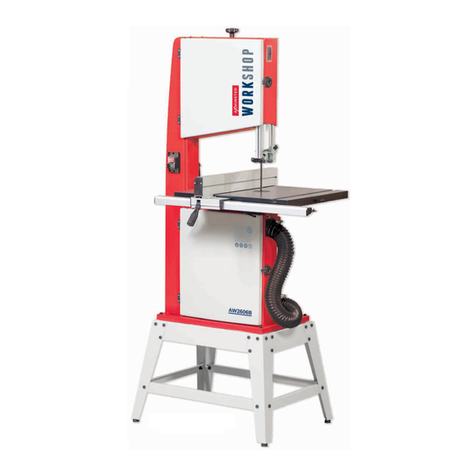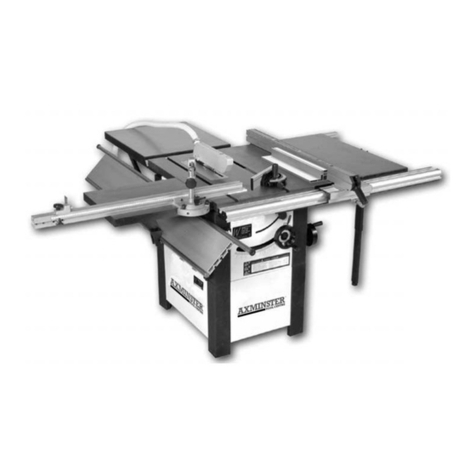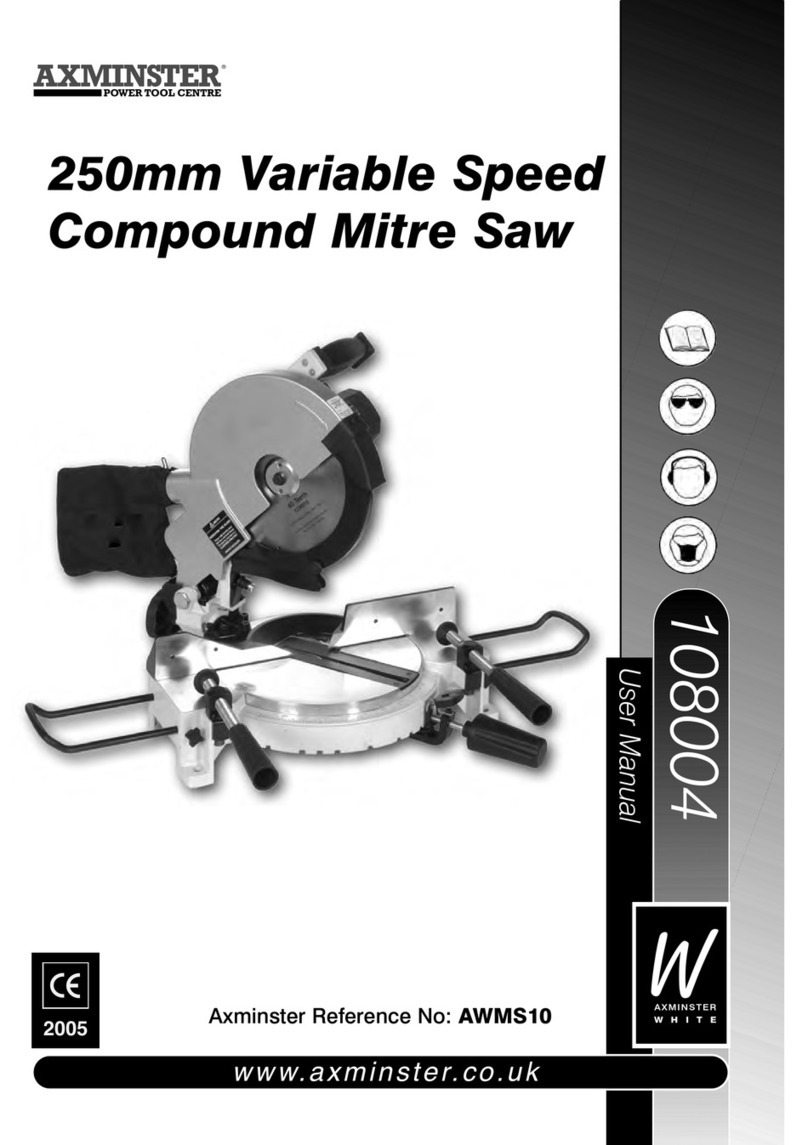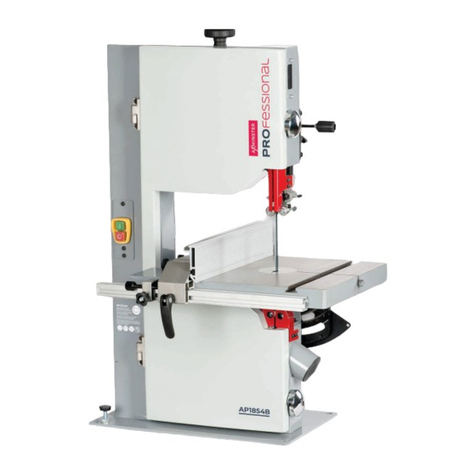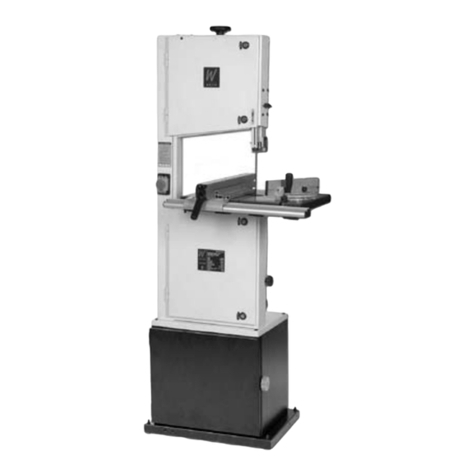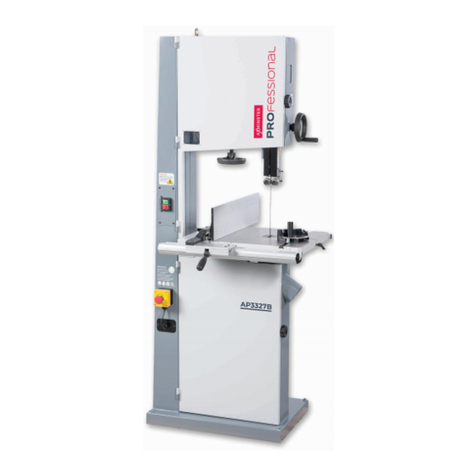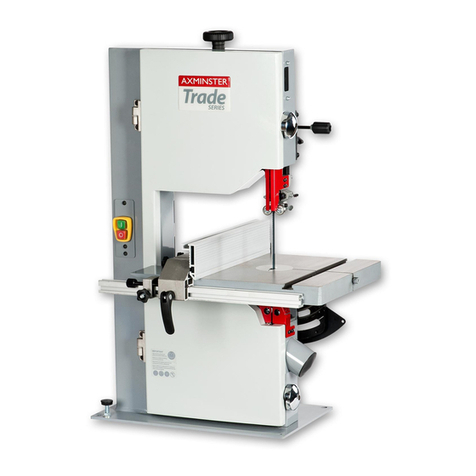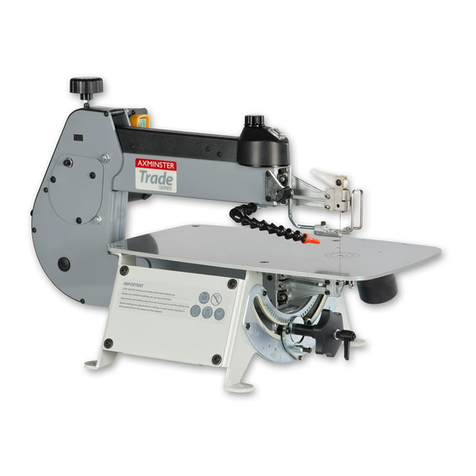
SAFETY
6
The following is a list of safety precautions you must consider when using a bandsaw:
ALWAYS REMEMBER TO DISCONNECT THE POWER TO THE BANDSAW
WHEN MAKING REPAIRS OR ADJUSTING BLADES AND GUARDS.
ALWAYS REMEMBER TO READ THROUGH THE MACHINE INSTRUCTIONS SUPPLIED.
•Eye and ear protection are required when
operating a Bandsaw. Dust extraction and
respiratory PPE are highly recommended.
• Do not wear gloves, loose clothing, jewellery, or
any dangling objects when operating a bandsaw.
•Do not allow children to operate the machine.
•All guards must be in place and fully operational.
If a guard seems to be missing or damaged, adjust,
replace or repair immediately.
•Disconnect the power to the bandsaw when
making repairs or adjusting blades and guards.
•Remember to check the blade tension after a new
blade has been ‘working’ for 30-60 minutes. The
blade may ‘stretch’ slightly from new and the
tension becomes slack.
•Hands and fingers must be kept clear of the
blade, always use push blocks and push sticks
when feeding small pieces into the blade.
•Use only the recommended blade size and
type for the machine- see page 17-18 for
recommendations.
• Ensure all blades are sharp and in good condition.
•The blade guard/guide set must be lowered to
approximately ¾”(20mm) above the workpiece.
•Check that the blade is tensioned and tracked
correctly before turning the machine on.
•Never cut pieces smaller than the table insert size.
•Do not attempt to cross cut round timber free
hand. Clamp to mitre fence or make a jig to keep
the work piece stable.
•Long material should be supported at the
same height as the saw table.
•To avoid contact with a coasting blade, do not
reach into the cutting area until the blade comes
to a full stop.
•Make sure the blade is not in contact with the
material when you start the saw.
•Never leave the machine unattended when it is
running.
•Keep the table top and surrounding work area
free from excessive dust and debris to help
prevent slipping or tripping.
•Maintain a balanced stance at all times so that
you do not fall or lean against the blade or other
moving parts.
•Do not overreach or use excessive force to
perform any machine operation.
For more information -https://www.hse.gov.uk/pubns/wis31.pdf


